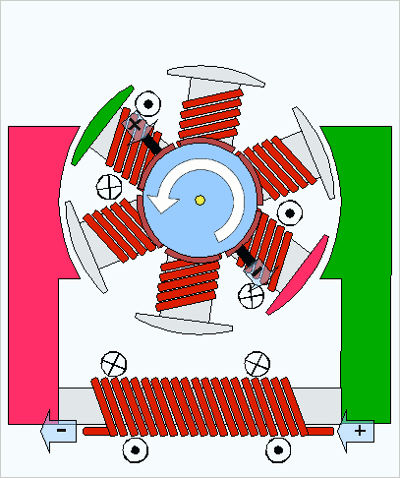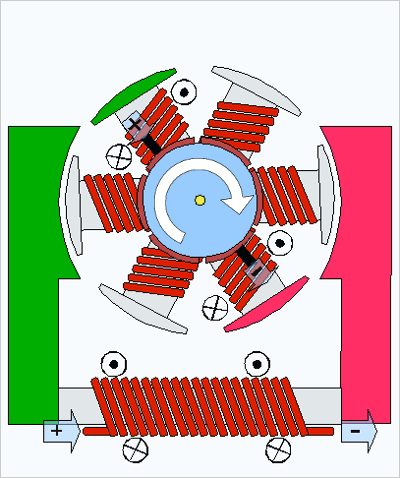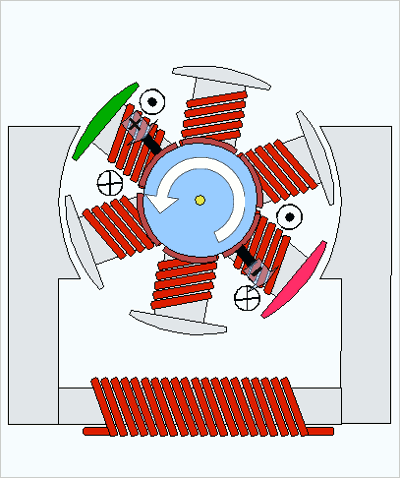|
|
|
|
News The Project Technology RoboSpatium Contribute Subject index Download Responses Games Gadgets Contact <<< DC motor (permanent magnets) Stepper motor >>> DC electric motor with wound statorConstruction details
Elements of a DC electric motor with wound stator: (1) Stator (2) Stator coil (3) Commutator (4) Brushes (5) Axis of rotation (6) Rotor (7) Rotor coil FunctionalityIn principle DC motors with wound stator work in the same way as those with permanent magnets described in the previous chapter. The only difference is the fact that the magnetic field of the stator is generated by an additional inductor operating as an electromagnet instead of the permanent magnets used so far.At the drawing above, the rotor is composed of three coils instead of two coils used at the motor of the previous chapter. Furthermore the sliding contacts not arranged on a vertical, perpendicularly line. As a consequence of these modifications the torque generated by the motor is higher at several operation conditions. If the coil of the stator is connected in series to those of the rotor, the motor is called a series-wound motor. In Shunt-wound motors the coils of the armature and the stator are connected in parallel mode. If the stator coil is connected to an independent voltage source it is called a separately-excited motor (sepex). By changing the polarity of the stator coil the direction of rotation changes, too. If the polarity of the stator coil is changed as well as those of the armature, the direction of rotation persists. 
Electrical excited DC motor: The direction of rotation is anticlockwise with the polarity given at this drawing. 
Electrical excited DC motor: The direction of rotation is clockwise with the polarity given at this drawing. 
Electrical excited DC motor: If no current is running through the stator coil, the motor rotates anticlockwise. That's caused by the interaction between the magnetic field of the armature's coil and the iron core of the stator (see Energy of magnetic fields). The ends of the armature's coil being connected to the voltage source attracts the iron of the stator whereby a torque acting anticlockwise is generated. The direction of rotation is independent from the polarity of the armature. Decisively is the orientation of the coil being connected to the voltage source. To invert the direction of rotation, the brushes have to be twisted! <<< DC motor (permanent magnets) Stepper motor >>> News The Project Technology RoboSpatium Contribute Subject index Archives Download Responses Games Links Gadgets Contact Imprint |
|
|